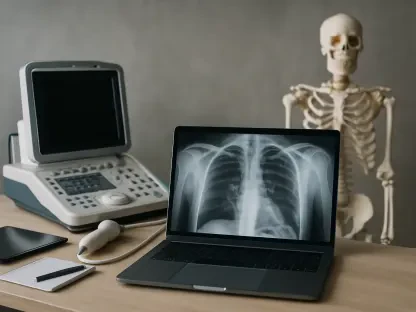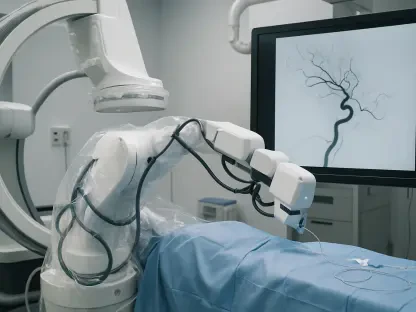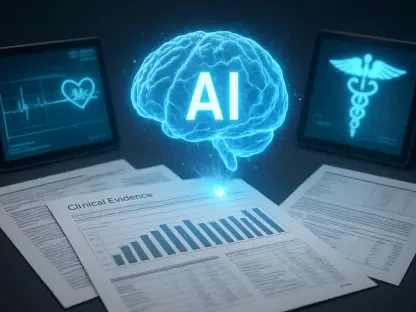Artificial Intelligence (AI) in healthcare has been a topic of much debate and excitement. As technology continues to advance, its applications in clinical medicine are becoming more prominent. However, the question remains: Is AI the future of clinical medicine or just a passing trend? This article explores the current state of AI in healthcare, its potential benefits, and the challenges it faces in transforming clinical practice.
The Current State of AI in Medicine
The Hype Cycle
The journey of AI in healthcare can be likened to Gartner’s Hype Cycle, which begins with inflated expectations and often leads to disillusionment. Currently, AI is moving past the initial hype, focusing on practical applications that can make a real-world impact. The technology’s trajectory in healthcare started with monumental excitement and impressive projections for transforming medical practices. Early proponents hailed AI as a revolutionary tool that could streamline efficiencies, reduce errors, and enhance patient care.
However, as with many emerging technologies, the initial enthusiasm was met with sobering realities. Early implementations often fell short of expectations, causing a phase of tempered enthusiasm and skepticism. Developers and clinicians learned that while AI had immense potential, integrating these systems into the complexity of medical practice was far from straightforward. Data privacy concerns, regulatory hurdles, and practical issues of real-world application presented formidable challenges. Now, the sector is entering a period where the focus shifts towards refining AI tools and ensuring their efficacy and reliability in clinical settings.
Practical Applications
AI is already being used in areas such as clinical documentation and decision support. These applications aim to reduce the burden on clinicians and improve patient care. However, their effectiveness varies, and there are still significant challenges to overcome. With the mounting workload on healthcare professionals, AI could be a game-changer in alleviating the pressure. For example, AI algorithms can analyze vast amounts of electronic health record (EHR) data to generate clinical insights, assist in diagnostic processes, and suggest potential treatment plans.
Despite these promising advancements, the practical application of AI in daily clinical practice faces hurdles. Some clinicians report that current AI tools sometimes fail to provide actionable insights or generate overwhelming amounts of data, leading to decision fatigue. The effectiveness of these systems is not uniform across different medical specialties and varied patient scenarios, necessitating further refinement. Moreover, the seamless integration of AI applications into existing healthcare infrastructures is critical. Without it, the technology risks becoming yet another layer of complexity for healthcare providers rather than a solution-oriented tool.
AI in Clinical Documentation
Reducing Documentation Time
One of the most promising applications of AI is in clinical documentation. AI-powered ambient scribing tools can listen to patient-clinician interactions and generate notes, potentially reducing the time clinicians spend on documentation. This can enhance patient interactions and reduce clinician burnout. Clinical documentation is a notorious time sink in healthcare settings, frequently cited as a leading cause of burnout among practitioners. AI tools designed to automate this process aim to free up valuable time for clinicians, enabling them to focus more on patient care.
Theoretically, these ambient scribing tools function by passively recording conversations and automatically generating succinct, accurate patient notes. This form of real-time documentation minimizes the need for extensive manual input, thus significantly reducing administrative burdens. For instance, studies have shown that AI-driven scribing can cut down documentation time by nearly two minutes per patient encounter, which, when aggregated, can mean substantial time savings. If implemented effectively, this innovation not only boosts operational efficiency but also enhances the quality of patient interactions by allowing clinicians to be more present during consultations.
Challenges and Limitations
Despite the potential benefits, the effectiveness of AI in clinical documentation is not consistent. Some studies have shown minimal impact on overall workload, and in complex cases, AI tools often fall short. The development of more advanced tools, such as Sayvant, aims to address these limitations. Currently, several AI systems are facing scrutiny due to their inability to adapt to complicated clinical scenarios that require nuanced decision-making. In emergency departments, where the information must be gathered from various sources over several hours, these tools often struggle to synthesize data effectively.
Furthermore, many existing AI documentation tools fall short in generating medical decision-making notes, which are essential for accurate clinical records and proper reimbursement. Real-world feedback also highlights that, in some cases, AI tools inadvertently increase the time clinicians spend on electronic health records due to inaccuracies that require correction. This points to a need for more advanced iterations that can handle the intricacies of medical documentation seamlessly. Sayvant, an AI scribing tool developed by Vituity’s Inflect innovation hub, is making strides in this area by assisting in generating decision-making content, thereby alleviating the burden of end-of-shift documentation.
AI in Clinical Decision Support
Potential Benefits
AI-driven clinical decision support (CDS) tools analyze vast amounts of EHR data to provide insights that can improve diagnosis and treatment. For example, AI has the potential to detect sepsis early, which could save lives and reduce hospital mortality rates. In theory, CDS tools leverage complex algorithms to process extensive datasets rapidly and accurately, presenting healthcare providers with actionable recommendations. The application of these systems ranges from identifying potential drug interactions to predicting patient deterioration.
The detection of sepsis is a particularly compelling example of AI’s capabilities. Sepsis, a life-threatening response to infection, requires early detection and prompt intervention to improve patient outcomes. AI systems can analyze variables such as vital signs, laboratory results, and patient history to identify patterns indicative of sepsis more swiftly than traditional methods. Early AI models have shown promise in predictive accuracy, potentially identifying at-risk patients well before clinical symptoms manifest. Such advancements could not only reduce mortality rates but also minimize the length of hospital stays and associated healthcare costs.
Challenges to Implementation
However, CDS tools face significant challenges, including high false-positive rates and the need for seamless integration into clinical workflows. Excessive and inaccurate alerts can lead to alert fatigue, causing clinicians to ignore important notifications. Despite their potential, these systems are hampered by practical limitations and reliability issues. For instance, AI tools need more refinement to reduce the high incidence of false positives, which creates unnecessary noise and distracts clinicians.
Additionally, many existing CDS tools operate in isolation rather than integrating smoothly with existing EHR systems, causing workflow disruptions. The flood of alerts, often redundant or irrelevant, can lead to “alert fatigue,” where healthcare providers become desensitized to notifications and may overlook critical information. For AI-driven clinical decision support tools to realize their potential, they must deliver pertinent, timely insights without overwhelming clinicians, fitting naturally into the workflow without prompting resistance or fatigue.
Other Promising AI Applications
Medical Record Summarization
AI holds promise in summarizing medical records. Clinicians often struggle to sift through lengthy patient histories, and AI-generated summaries could revolutionize this process, making it easier to find relevant details quickly. In medical settings, combing through voluminous patient records to extract pertinent information is a cumbersome and time-consuming task. The introduction of AI tools capable of generating concise, high-impact summaries can significantly streamline this process.
For example, an AI system can distill the essence of a patient’s medical history, highlighting critical diagnostics, past treatments, and ongoing care plans. Such summaries aid clinicians by providing a snapshot view that is readily comprehensible, thereby facilitating quicker, more informed decision-making. In fast-paced environments such as emergency departments, this could prove invaluable, allowing doctors to grasp the patient’s medical background swiftly without wading through extensive files. Such efficient summarization tools stand to reduce cognitive load and save valuable time, enhancing overall care delivery.
Enhancing Discharge Summaries
AI can assist in creating clearer, more actionable discharge summaries for patients and families. These applications, while not as headline-grabbing, address real inefficiencies in clinical workflows and can significantly improve patient care. Accurate and comprehensible discharge summaries are crucial for ensuring that patients follow post-care instructions and adhere to prescribed treatment plans. Often, these summaries are either too vague or too complex, leading to confusion and non-compliance among patients.
AI-driven tools can generate discharge summaries that are not only precise but also patient-friendly, delineating follow-up steps, dietary restrictions, medication schedules, and other critical aspects of post-discharge care. By making these documents clearer and more actionable, AI tools can improve patient outcomes by ensuring better adherence to post-discharge instructions. Furthermore, these AI-generated summaries can be tailored to meet the unique needs of each patient, promoting personalized care while reducing the likelihood of readmissions due to misunderstanding or oversight.
A Measured Perspective on AI
Incremental Improvements
The overarching message is that AI in clinical medicine is still a work in progress. The most meaningful advancements will come from targeted innovations addressing specific challenges rather than expecting sweeping changes. While the enthusiasm surrounding AI’s potential is justified, it is essential to manage expectations and focus on incremental improvements that directly enhance clinical workflows and patient care. Small, practical advancements can accumulate over time, significantly impacting healthcare delivery.
For instance, rather than trying to develop AI that offers broad, sweeping solutions across various medical disciplines, focusing on specific, high-impact areas such as clinical documentation and decision support may yield more immediate and tangible benefits. These incremental innovations can serve as building blocks, gradually integrating more complex and extensive functionalities as the technology matures. The path to meaningful AI integration in healthcare will likely be a series of small, carefully measured steps rather than a single transformative leap.
Thoughtful Engagement
Artificial Intelligence (AI) in healthcare has sparked much debate and excitement. With continuous advancements in technology, its role in clinical medicine is becoming increasingly significant. However, we must consider if AI is poised to become the future of clinical medicine or if it is merely a fleeting trend. This article delves into the present state of AI in the healthcare sector, examining its potential benefits as well as the challenges it must overcome to revolutionize clinical practice.
AI offers numerous advantages in healthcare, such as improved diagnostic accuracy, personalized treatment plans, and streamlined administrative tasks. These improvements could lead to better patient outcomes and increased efficiency in medical processes. Nevertheless, integrating AI into healthcare faces obstacles, including ethical concerns, data privacy issues, and the need for extensive training for medical professionals. In conclusion, while the potential of AI in clinical medicine is immense, its future depends on successfully addressing these challenges. The ongoing evolution of AI technology will likely shape its role in healthcare for years to come.









